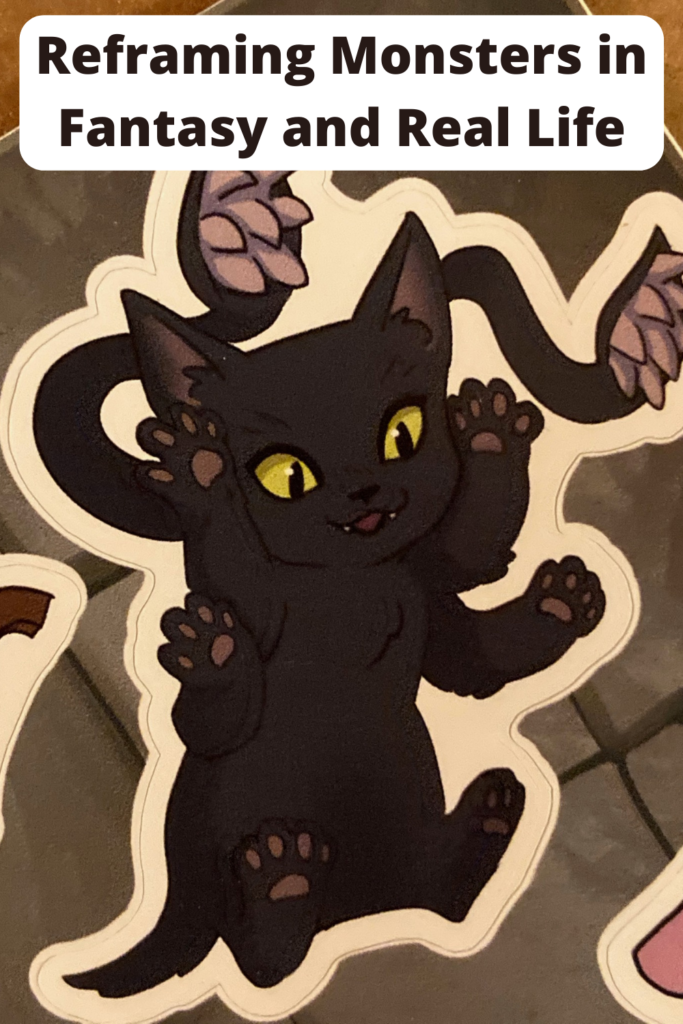
“I’m a hell hound! But a nice one,” my four year old says, referring to a Dungeons and Dragons monster who is literally supposed to be a dog from Hades.
This may seem like an odd exchange, but it’s perfectly normal in our household.
Ever since my husband got the D&D Monster Manual last December for Christmas, my younger son has loved it with the intensity of a favorite picture book. He flips through it, points to the most terrifying of monsters and declares, “I’m a baby one of those.” He even dressed up as a baby Displacer Beast – as he calls it, a “Phase Kitty” – for Halloween. It involved black cat ears, a tail, and two giant tail-like tentacles with teeth coming out of his back. It was the cutest darn evil fairy cat I’ve ever seen.
I love his imagination, but wondered why exactly sparked his interest in pretending to be these terrifying monsters. Then it clicked when I read a post by autistic writer and parenting coach Kristy Forbes about why some autistic kids like to pretend they’re super villains. She talks about how for kids who struggle to behave “correctly” and feel like they’re “bad” relate to super villains as fellow “bad people.” They think, “Well, at least they’ve been able to harness that badness to do something with it. Have control as a result of it.” That’s powerful, you know?
But I think my kid’s love of monsters goes the next step. He’s turning these monsters into something not scary at all. In fact, he’s redeeming them. In his mind, they’re cute and cuddly; when he is one, he is too. Protective, even. If a literal beast from hell can be good, well, anyone can be, right?
While his preoccupation is focused on monsters, I hope it also reflects a somewhat more complex view of the world beyond “good guys” and “bad guys.” We try to talk about making good choices and bad choices with our kids. After all, people who struggle to be “good” or think they’re bad can be compassionate and just. On the flip side, people who think they are good can carry out terrible, evil behaviors. In fact, our view of ourselves as “good” can cause us to wave aside truly immoral behavior from ourselves or people like us.
So I want my kids to know that they can take each action day by day. That what you did in the past doesn’t doom you to the future – but that being good in the past doesn’t guarantee your behaviors are always good either. I want to teach them self-reflection and continuous growth. Without it, we will perpetually be morally immature. We need to perpetually learn and course correct as necessary.
And in this world – where there are literal Nazis taking selfies in the Capitol of the U.S. – we need to be able to look at behaviors with moral clarity. Even our own behaviors. We need to remember that evil doesn’t always look like monsters and the things we might at first think are monsters aren’t always evil.
So I hope that my adorable little monster will continue to see the world in scales of gray instead of black and white. To judge people on what they do or don’t do instead of what they are according to existing prejudices. To appreciate differences rather than vilify them. Perhaps most importantly, to be able to make moral decisions based in a deep respect and appreciation for people’s fundamental humanity.